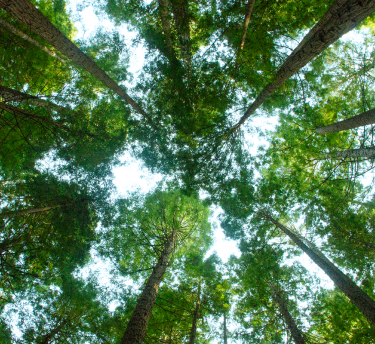Allergy season is different for everyone. That’s because different kinds of outdoor allergens — or irritants — get distributed into the air year-round.


Climate Change & Allergies: Can Temperature Changes Worsen Allergies?
If your allergy symptoms are made worse by changing temperatures, you’re not alone.
If you’re an allergy fighter, you already know that symptoms can be brought on by a wide range of potential triggers—including changing temperatures and weather conditions that vary from season to season. But did you know that climate change may also play a role?1, 2
Temperature changes and air humidity levels can significantly affect those who have respiratory allergies. Often worsening during seasonal shifts, allergy symptoms — such as runny nose, nasal congestion, sneezing, and itching (in the eyes and nose) — can get in the way of daily activities and keep you from living your best life.1, 3
However, in addition to normal temperature fluctuations, did you know that there are also other factors related to the weather that might affect allergic conditions? Climate change, as well as increased air pollution, may also contribute to the intensification of allergy symptoms.1, 4
Can Changes in Temperature and Humidity Affect Allergy Symptoms?
Environmental factors — like changing seasons, fluctuating temperatures, and higher humidity levels — can affect those who suffer from allergies. For example, when there’s a notable increase in air humidity (such as after heavy rainfall), there tends to be an equal increase in symptom-causing mould in the environment. Mould, a type of microscopic fungus, contains spores that — similarly to pollen — are released into the air and can trigger a variety of allergy symptoms. Mould spores are at their highest during times of hot, humid weather conditions, and can also be exacerbated by improper cleaning of air conditioning systems.1, 5, 6
It's worth noting that a sudden drop in air humidity can also affect your airways, leaving them dry and potentially more vulnerable to react to allergenic substances, fungi, viruses, and bacteria. According to the World Health Organization (WHO), the ideal level of relative humidity is between 40% and 70%. Alternately, the body tends to be more susceptible to health-related problems when the index is far below the recommended level (at 20% or 30%).7
Rainfall and heavy winds from thunderstorms can also impact allergy symptoms in those with seasonal allergies in a variety of ways. Since rain typically causes pollen to drop, it can temporarily lessen symptoms, while heavy winds (such as during a thunderstorm) can cause pollen and mould spores to become more airborne and, therefore, more transmissible.1, 5
Can Climate Change Worsen Allergy Symptoms?
There are many possible pathways through which climate change can affect allergies. Due to the high prevalence of allergic conditions like asthma and allergic rhinitis, along with allergic sensitisation to environmental allergens such as certain pollens and fungal spores, Australia is particularly vulnerable to the effect of climate change on allergy symptoms.8
Climate has a significant impact on how allergenic organisms live, produce allergens, and ultimately expose us to those allergens.8 For instance, in Australia, variation in climate even within the city of Sydney is associated with differing allergy patterns, with those living less than 15 km from the coast being less commonly sensitised to grass aeroallergens than people further inland.9 Similar to this, a recent study in South East Queensland discovered that people who live near the coast have significantly higher rates of eucalyptus pollen allergy than those who live closer to the inland and higher elevations.10
Climate has a significant impact on the type and relative abundance of airborne pollen in urban Australia in particular, and as the climate changes, we can expect changes in the allergens as well.8
Across most of Australia, summers are now four weeks longer than they were, while winters have shrunk by three weeks. Summers are now nearly double the length of winters.14 All of these factors, in turn, may increase the length of peak allergy seasons and the prevalence and duration of symptom flare-ups among allergy sufferers.1, 6
Respiratory allergies, which can be intensified by changes in climate, usually cause a series of symptoms in the upper respiratory tract, such as runny nose, sneezing, and red, itchy eyes. Allergic rhinitis flare-ups also tend to be quite common in periods of drastic temperature change, which may be affected by ongoing climate change, although research is ongoing.1, 3, 6
Climate Change, Air Pollution, and Allergies
Climate change may also have the potential to affect individuals with respiratory allergies by worsening air pollution and air quality. The continued emission of greenhouse gasses in the environment contributes to the increase in temperature, and therefore, can lead to changes in the relative air humidity and the intensity and frequency of climate events. All of this directly impacts the presence of allergens in the atmosphere, which, in turn, tends to aggravate the symptoms of those who suffer from respiratory allergies.2,
Alternately, the increase in carbon dioxide in the atmosphere may also act as a fertilizer for plants. This fact, combined with other environmental changes (such as the increase in temperatures globally), can intensify pollen production—one of the most common respiratory allergens.6, 11
How To Manage Allergy Symptoms
The best way to deal with allergy symptoms is to avoid contact with allergens. In addition, try to take any necessary precautions, such as keeping your environment clean, dry, and well-ventilated (free of dust, mould, or pollen) to help avoid potential triggers at home.1, 12
Furthermore, you can focus on healthy lifestyle habits, such as bathing regularly to remove allergens from your hair and body at the end of the day. Or, when coming into contact with allergens that trigger allergy flare-ups, try to avoid touching your face or eyes, and washing your hands immediately afterwards. Most importantly, it’s essential to always consult a doctor or allergist for an accurate diagnosis and treatment plan, which may include OTC oral antihistamines.13
Related articles